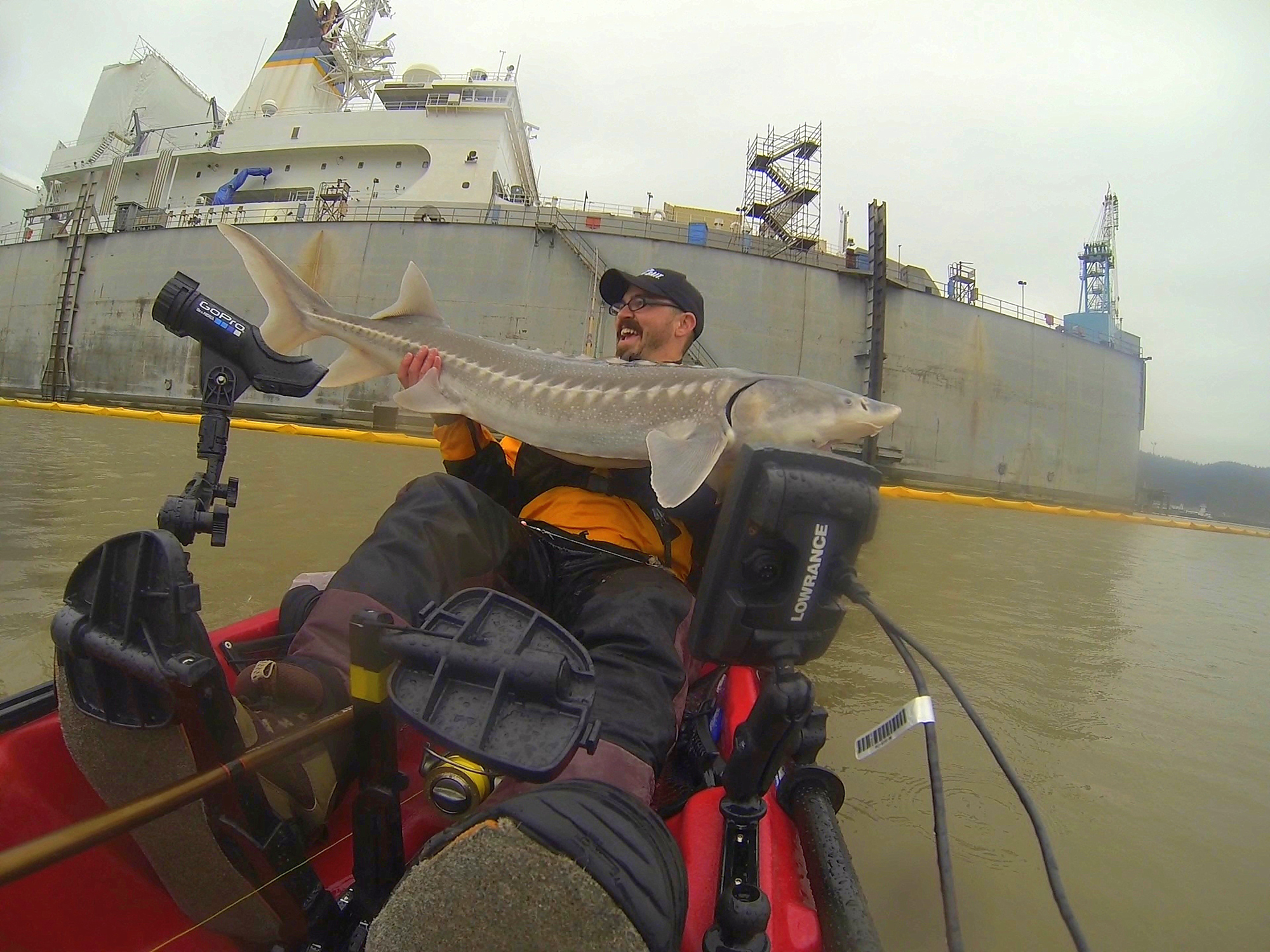Over the decades, the sturgeon population of the lower Columbia River often has bedeviled Washington and Oregon biologists tasked with its management.
Well, 2017 is here and it’s more of the same.
The legal-size population between the ocean and Bonneville Dam has increased in the past year from about 144,000 to either 156,000 or 224,000 — depending on the scientific sampling method used, Pat Frazier, fish policy coordinator, told the Washington Fish and Wildlife Commission in Vancouver on Saturday.
“It’s not an exact science,’’ Frazier said. “These critters are challenging for us…We’re not saying one is necessarily right over the other.’’
However, Frazier said an increase of 57 percent in a year is puzzling.
“We struggle a little bit with where this increase in the legal population came from,’’ he said.
Brad James, sturgeon biologist for the department, told the Columbia River Recreational Advisory Group last week, he thinks the population is closer to the 156,000 number than 224,000.
“Such a significant jump is difficult to understand where all those fish would have come from,’’ James said. “It doesn’t match modeled projections and is not supported by catch-per-unit trend in gillnet and setline tagging fisheries.’’
Sturgeon retention in the lower Columbia River has not been allowed in sport or commercial fisheries since 2013.
However, a big jump in the population would explain how good the catch-and-release sturgeon fishery in the estuary was last summer, Butch Smith, president of the Ilwaco Charter Association, told the commission.
“You had to hide your hook to bait it,’’ Smith said. “It was absolutely phenomenal down there.’’
Sturgeon are known to move in and out of the Columbia River system, often spending years in other coastal estuaries.
“Fish moving in and out can make making estimates difficult,’’ Smith said.
Regardless of what the estimate of legal-size sturgeon is, what’s most important is what happens in the next five years, Frazier said.
“We see a very flat, flat population,’’ he said, “a level trend over the next two to three years.’’
There are other troubling signs regarding lower Columbia sturgeon:
• About 65 percent of the lower Columbia sturgeon population is juvenile fish. That was estimated to be 69 percent a year. Oregon’s sturgeon conservation plan sets 90 percent as the desired level.
• The estimate of spawning-size adult sturgeon is 4,140 using one methodology and 5,950 using another. That makes the three-year averages 3,620 and 4,230, respectively.
Oregon’s conservation plan calls for a minimum of 3,900 adult sturgeon on a three-year average.
Only half of the spawning-size population is female, and female sturgeon reproduce on an average of once every three years.
• Information from capturing young-of-the-year sturgeon indicates poor spawning in 2016, the seventh consecutive year the lower Columbia production has been low. However, production was better in the lower Willamette, a continuing trend.
• Sea lion abundance is high in the lower Columbia River. Steller sea lions are well-known to prey on sturgeon.
Frazier said far larger numbers of sturgeon now are being seen in the Lewis, Sandy and Cowlitz rivers than before.
“What we think is sturgeon are moving out of their preferred area below Bonneville Dam,’’ he said. “Sea lions are having an impact on productivity by moving fish from preferred habitat to less preferred.’’
“Predation right below Bonneville Dam has dropped off dramatically,’’ James said. “It’s probably due to sturgeon realizing it’s hazardous to be in that area.’’
Harry Barber of Washougal, a member of the bistate Columbia River Recreation Advisory Group, said that displacement is a big problem.
“Sturgeon need high, turbulent waters to spawn,’’ Barber said. “There’s not that kind of turbulence in the Lewis or Cowlitz.’’
As a former statistician, Barber said the higher number of legal-size sturgeon is suspect.
“This is a population that is severely stressed and I think really sick,’’ he said.
Frazier said Washington fish managers want to meet with their Oregon counterparts and develop a five- to 15-year management strategy for sturgeon, one that considers “a predictable, stable fishery.’’
“We don’t want to move toward salmon management with sturgeon,’’ he added.
Ed Wickersham of Ridgefield urged the commission to continue with no retention of sturgeon.
“We’re not recruiting juveniles and that should be very troubling,’’ Wickersham said.
He also said allowing a 365-day-a-year catch-and-release fishery on a species trying to be protected is “an enforcement nightmare.’’
Commission member Larry Carpenter of Mount Vernon said the agency needs to provide a vision for the public and if there is a chance of future retention of sturgeon.
“We need to keep in mind our science is imperfect,’’ said Miranda Wecker, a commission member from Naselle.




